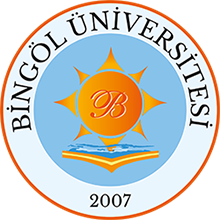Elazığ ve Çevresinde Yetiştirilen Bal Arısı Kolonilerinde Görülen Arı Kayıplarında Deforme Kanat Virusu (Dkv) Varlığı ve Yaygınlığının Araştırılması
Abstract
ÖZET:
Bu çalışma, 2024 yılı Mart-Haziran aylarında Elazığ yöresinde yetiştirilen bal arısı kolonilerinde görülen arı ölümlerinin nedenini deforme kanat virusu (DKV) yönünden araştırmak amacıyla yürütülmüştür. Çalışma, toplam 3391 kovanlı, 14 arı kolonisinden 183 ölü ergin arı numunesi, 31 erkek arı larvası, 23 işçi arı larvası örnekleri toplandı. Ölü ergin arı numuneleri, erkek arı larvası numuneleri, işçi arı larvası numuneleri birleştirilerek koloni bazında toplam 14 numune havuzu oluşturuldu. Koloni bazında yapılan numune havuzlarında RT- PCR yöntemi ile deforme kanat virusu nükleik asit (RNA) varlığı araştırıldı. RT- PCR sonuçlarına göre ergin arı ölümü görülen, Elazığ’ın Merkez, Ağın, Baskil, Kovancılar ve Sivrice ilçelerinden örneklenen 14 bal arısı kolonisinde DKV RNA’sına rastlanmadı. Bu sonuçlara göre örnekleme yapılan bal arısı kolonilerinde ölümlerin nedeninin diğer mikrobiyolojik olan veya olmayan nedenlere bağlı olabileceği kanaatine varılmıştır. Bu nedenle ergin arı ölümlerinde ölüm nedenlerini araştırmada ölümlere neden olan etkenlerin tamamının değerlendirilmesi gerekmektedir. ABSTRACT:
This study was conducted to investigate the cause of honey bee colony deaths observed in the Elazığ region between March and June 2024, focusing on the presence of Deformed Wing virus (DWV). In the study, a total of 183 dead adult bee samples, 31 drone larvae, and 23 worker bee larvae were collected from 14 honey bee colonies comprising 3,391 hives. The dead adult bee samples, drone egg samples, and worker bee egg samples were pooled on a colony basis, resulting in 14 pooled samples. The presence of Deformed Wing virus (DWV) nucleic acid (RNA) in these pooled colony samples was investigated using the RT-PCR method. According to the RT-PCR results, no DWV RNA was detected in any of the 14 honey bee colonies sampled from the districts of Merkez, Ağın, Baskil, Kovancılar, and Sivrice in Elazığ, where adult bee mortality was observed. Based on these findings, it was concluded that the cause of the observed bee deaths in the sampled colonies may be related to other microbiological or non-microbiological factors. Therefore, it is essential to consider all possible causative agents when investigating the reasons behind adult bee mortalities.
Collections
- Arı ve Arı Ürünleri [18]

DSpace@BİNGÖL by Bingöl University Institutional Repository is licensed under a Creative Commons Attribution-NonCommercial-NoDerivs 4.0 Unported License..













